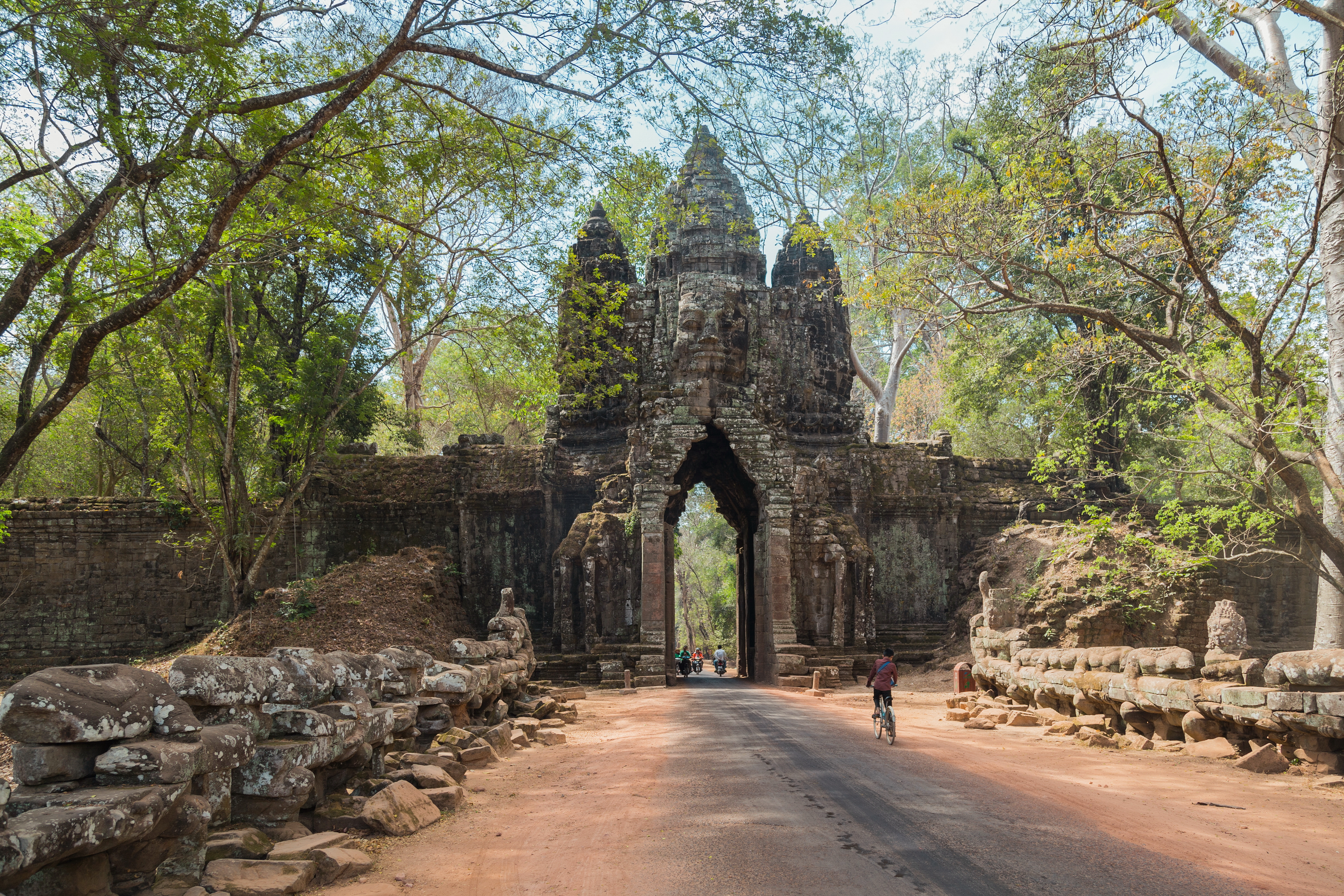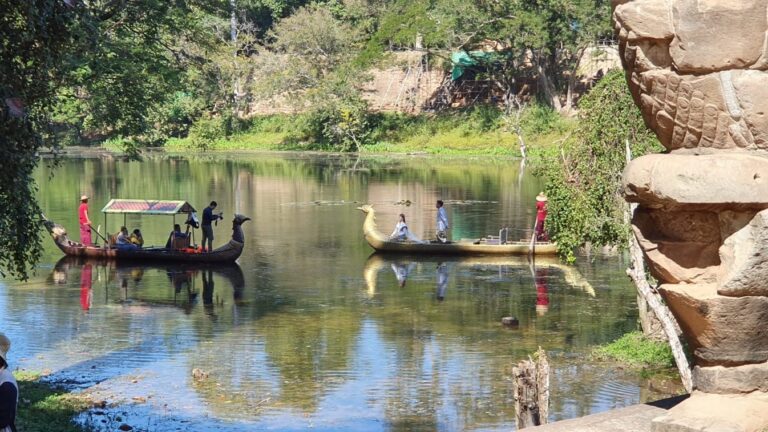Angkor Thom or the ‘great city’ was the last Khmer empire’s capital from the 12th century until its abandonment in the 16th century. At its peak, the city was home to a population of around 1 million people. Angkor Thom contains the remains of a large number of temples and palaces of different ages and styles. The fortified city is not only an architectural marvel but also an incredibly well-planned ancient city with hospitals, schools, and reservoirs (known as barays).
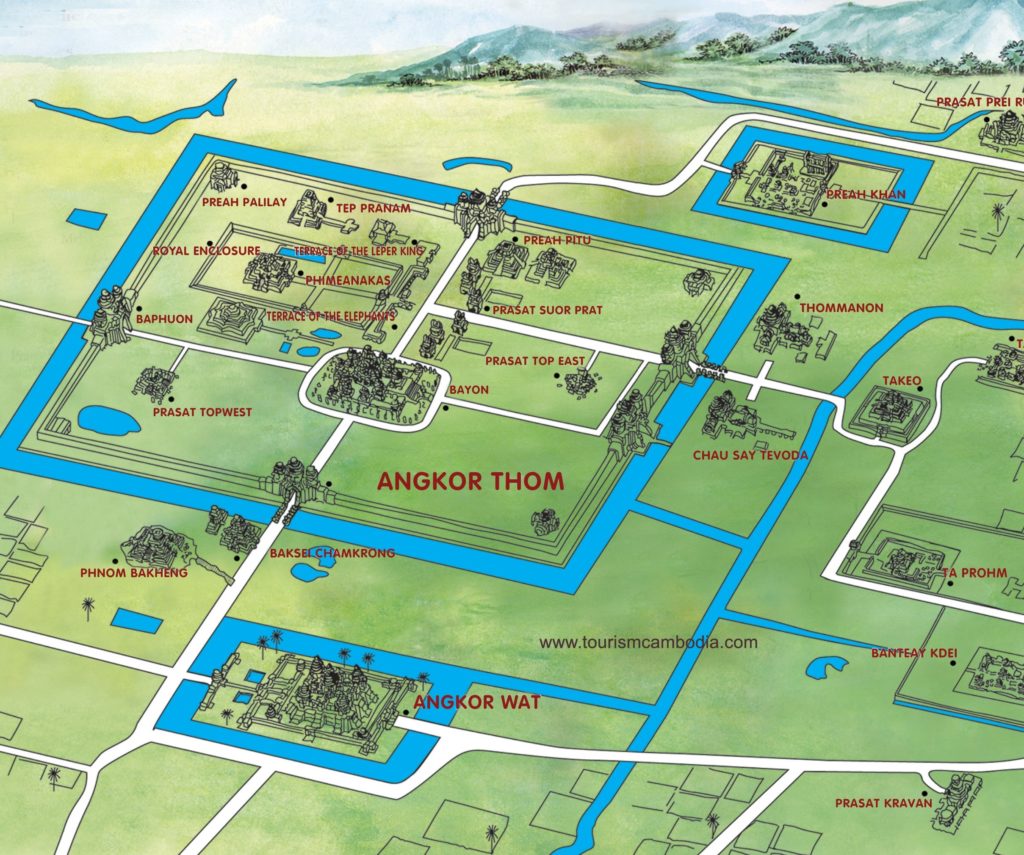
History and Origins
Angkor
Thom came into existence under the patronage of Jayavarman VII, when he
defeated the Cham invaders from Vietnam who had destroyed the old Khmer capital
of Yashodhapura. Some of the monuments in the Angkor Thom complex such as the
Baphuon Temple and the Phimeanakas were already in existence before the
establishment of the city by Jayavarman VII.
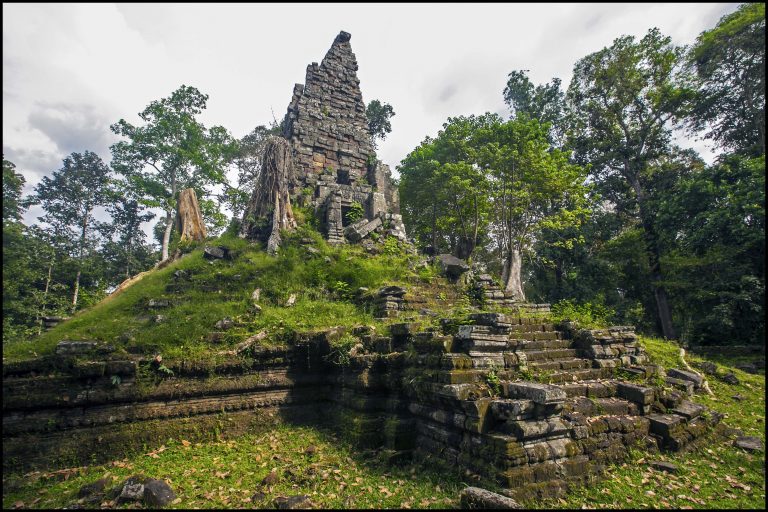
Layout of the Angkor Thom
Symbolically,
Angkor Thom is a representation of a microcosm of the universe that is divided
into four parts by the main axes. Located at the center of the axes, the Bayon
temple symbolizes the link between heaven and earth. The walls enclosing Angkor
Thom represent the stonewall around the universe and the mountain ranges around
Mount Meru, the abode of the Hindu Gods. The moat surrounding Angkor Thom
represents the cosmic ocean.

Gates of Angkor Thom
The
causeway entrances to the Angkor Thom portray the Hindu legend of the churning
on the cosmic ocean. There are 54 Devas (Gods) on the right and 54 Asuras
(Demons) on the left guarding each side of a long bridge to each of the five
entrances into Angkor Thom. Some of the heads on these Devas and Asuras have
been replaced during restoration efforts. A nine-headed serpent or naga’s body
is supported by each of the devas and the asuras to form a railing on the
bridge. The center of the gates is adorned with the face of Avalokiteshvara,
the Bodhisattva (‘one who is bound for enlightenment’) of compassion and mercy.
The face of the Avalokiteshvara was modeled after Jayavarman VII,
himself.
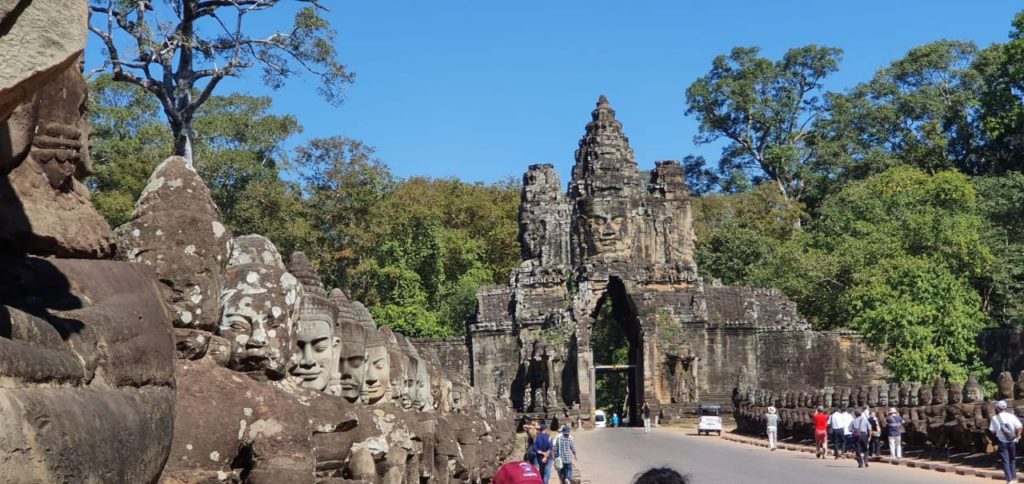
The
east gate of Angkor Thom made an appearance in the 2001 movie Lara Croft: Tomb
Raider.
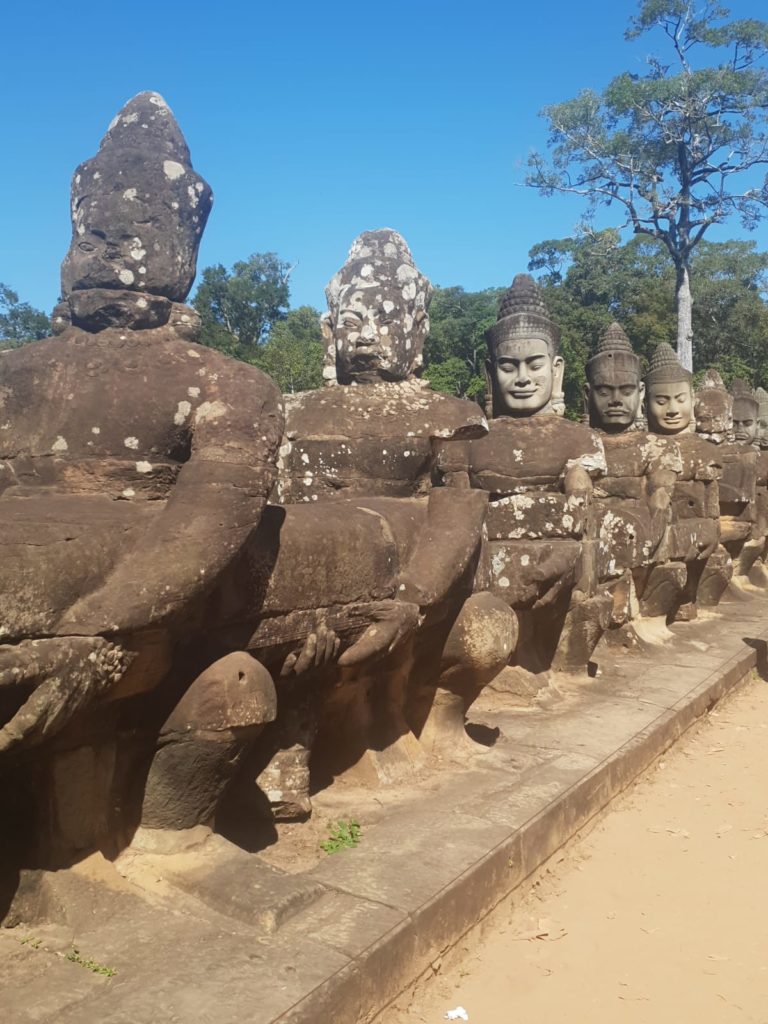
Source: Author’s photograph.
Role of Buddhism
Unlike
his Hindu predecessors (and successors), Jayavarman VII departed radically from
the Shaivite (worship of Shiva) and Hindu tradition of his predecessors by
adopting Mahayana Buddhism. This is apparent in the architecture of Angkor Thom
as compared to other Angkorian architecture, which is more
Hindu-oriented.

Bayon Temple
The Bayon temple is recognizable from the 216 smiling faces of the Avalokiteshvara, the bodhisattva of compassion – modeled after Jayavarman VII, himself. The astonishing layout is unique in Khmer architecture. It comprises 54 towers and three levels of tunnels, stairs, yards and blocked doorways creating a mesmerizing labyrinth. The galleries on the first and second levels have narrative bas-reliefs – much like the Angkor Wat. They lead up to the third level with a central tower. The Bayon was intended as a definitive political statement declaring the shift of the ancient Cambodian people from Hinduism to Mahayana Buddhism under Jayavarman VII.
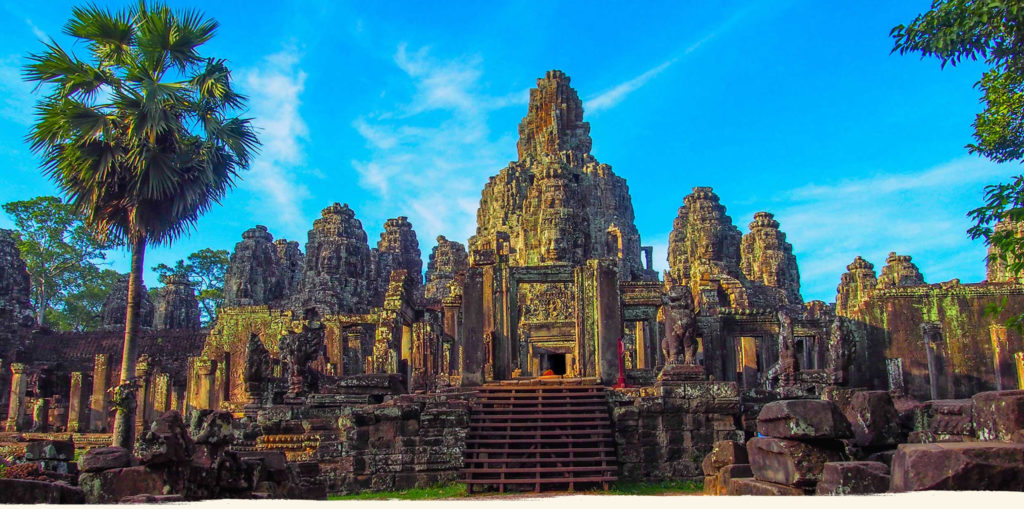
Baphuon Temple
The
pyramid temple of Baphuon was built by King Udayadityavarman II in the 11th
century, before the city of Angkor Thom was established. It was originally
designed as a Hindu temple dedicated to Shiva and the highest point of the
temple has a single sanctuary that housed a linga or the phallic representation
of Shiva. The temple is completely adorned with complex carvings and narrative
bas reliefs of mythological events.
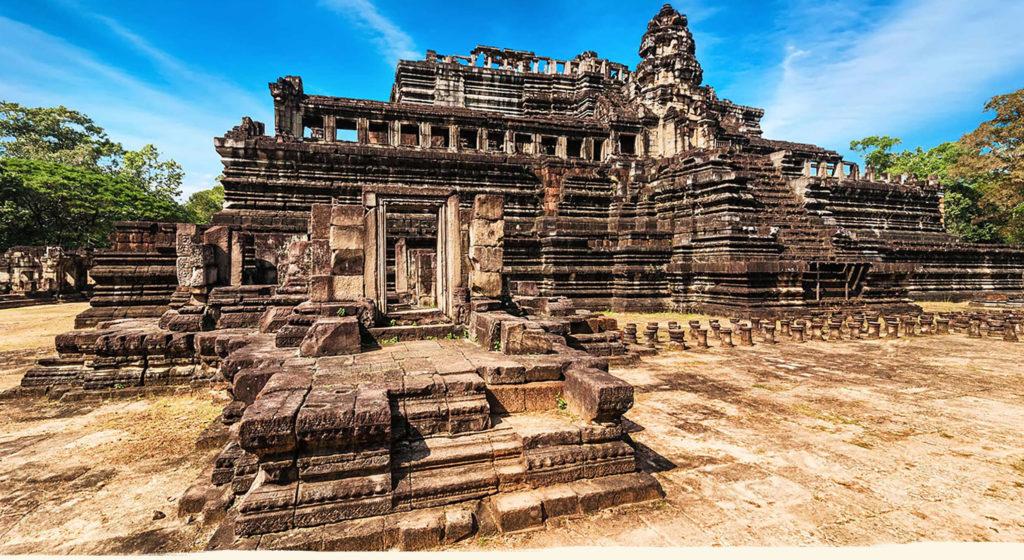
The
Baphuon was eventually converted to a Buddhist temple and a huge reclining
Buddha was added around this time, one of the largest in Southeast Asia. The
sandy soil of Cambodia proved to be inadequate for the immense structure of the
Baphoun. Large portions had already collapsed by the time it was converted to a
Buddhist temple. The stones from the collapsed portion were utilized in the
creation of the reclining Buddha.

The temple was on the verge of complete structural failure by the early 20th century and was taken apart for reconstruction before the Cambodian Civil War. The plans for reconstruction were destroyed by the devastating Khmer Rouge, which turned the temple remains into the world’s largest jigsaw puzzle. A more modern restoration project was implemented to restore the temple which took an astonishing 16 years to complete!

Terrace of the Leper King
The
Leper King Terrace was built in the Bayon style under Jayavarman VII. On top of
the platform is a nude statue (the original is at the National Museum of Phnom
Pehn). The statute was named the ‘leper king’ because of the discoloration on
it is reminiscent of a person with leprosy. The original statue has the name
‘Dharmraja’ etched at the bottom, the name by which Yasovarman I was known. It
is speculated that Yasovarman I suffered from leprosy. Recent theories,
however, suggest that terrace may have been a royal funerary site and the
sculpture represents Yama, the Hindu God of death.

Terrace of the Elephants
The
Terrace of the Elephants was used by Jayavarman VII as a platform for viewing
public ceremonies and served as a base for the royal audience hall. Most of the
original structure was made of organic material and has long since disappeared.
Most of what remains are the foundation platforms of the original complex. The
terrace is named for the elephant carvings. The middle section of the retaining
wall is decorated with life-size garudas and lions. The Elephant Terrace and
the Leper King terrace formed the Eastern boundary of the Palace enclosure. The
Elephant Terrace and the Leper King terrace formed the Eastern boundary of the
Palace enclosure.

Phimeanakas
The
Phimeanakas or the Celestial Palace is a three-tiered temple that stands close
to the center of a walled area that once housed the royal palace. This
structure, like the Baphoun temple, was built in the late 10th and early
11th century, before the establishment of the Angkor Thom.

The original structure had a golden tower at the very top. According to legend, the nine-headed Naga (serpent) lived in the tower and would appear disguised as a beautiful woman. The Khmer King would have to lay with Naga every night before he could join his wives. It was said that if the King missed even one night then a great disaster would befall his kingdom and if the Naga failed to appear, then the king’s days were numbered and he would die.
